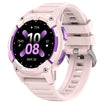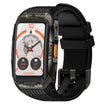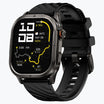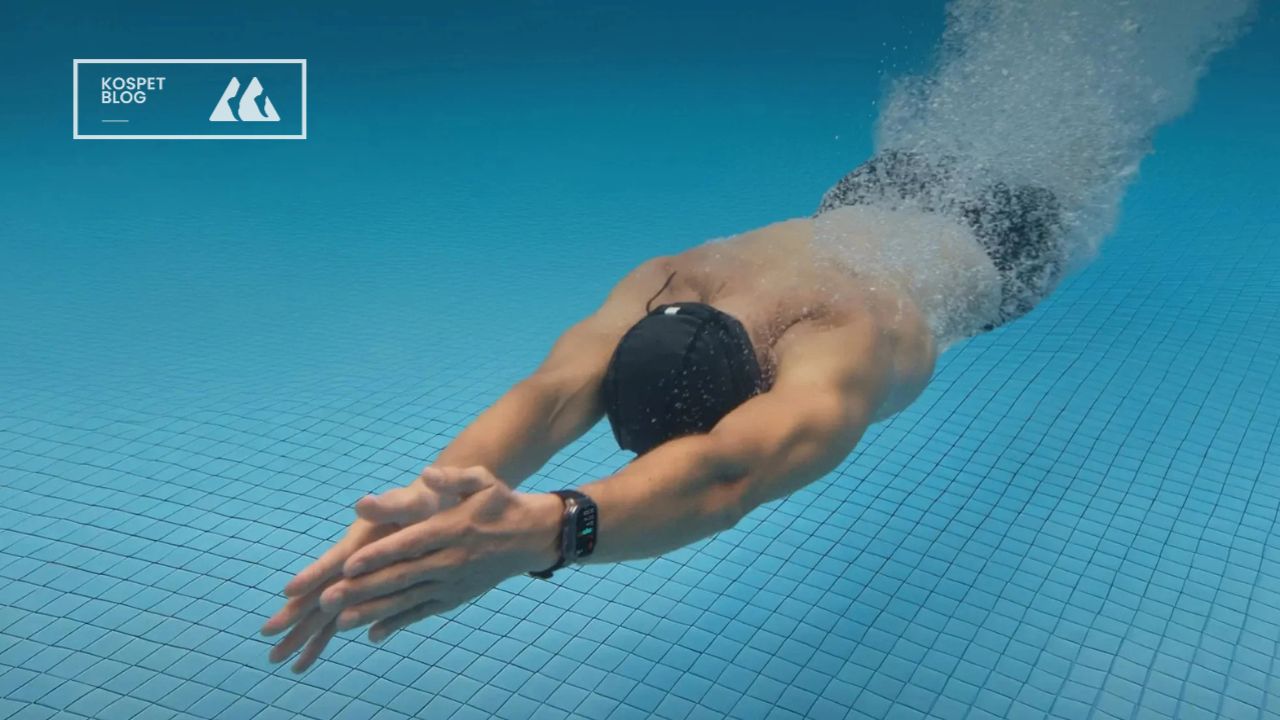If you're looking to improve your swimming efficiency, SWOLF might be one of the most valuable metrics to track.
A combination of "swim" and "golf," SWOLF combines stroke count and time to provide a unique score that directly indicates how efficiently you're swimming. Lower scores reflect greater efficiency: fewer strokes and faster times.
For swimmers using waterproof smartwatches, SWOLF provides real-time feedback on your performance. Whether you're training for a triathlon, refining your lap swimming, or simply aiming for better efficiency in the pool, SWOLF allows you to track progress and adjust technique to become a more effective swimmer.
This article explains how SWOLF works, why it's useful, and how waterproof smartwatches can help you monitor and improve your SWOLF score, transforming your swim training.
How Waterproof Smartwatches Track Your SWOLF Score
Waterproof smartwatches equipped with SWOLF tracking features are powerful tools for tracking your swimming performance. But how do these watches actually calculate and track your SWOLF score?
Here’s how it works:
- Stroke Count Detection: The watch uses motion sensors (accelerometers and gyroscopes) to count the strokes you take per lap. Your stroke efficiency is captured here.if you’re taking too many strokes for each lap, your SWOLF score will be high.
- Time Tracking: The watch also measures the time it takes to swim each lap. The goal is to swim faster with fewer strokes that reducing the time while keeping the stroke count low.
- SWOLF Calculation: The SWOLF score is generated by adding your lap time to the number of strokes. For example, if it takes 30 seconds to swim a lap and you take 15 strokes, your SWOLF score would be 45. A lower score indicates more efficient swimming.
Waterproof smartwatches are designed to accurately track this data in both pool and open-water environments, ensuring that you get precise feedback regardless of where you swim.
Why SWOLF Score Matters for Swimming Efficiency

The SWOLF score is much more than just a number—it’s an essential tool for improving swimming efficiency. Here’s why it matters for swimmers:
Maximizing Energy Efficiency: Lowering your SWOLF score means you're swimming more efficiently—using fewer strokes to cover the same distance and completing laps faster. This is especially valuable for long-distance swimmers or anyone focused on endurance, as reducing energy expenditure is key for sustaining performance over time.
Improving Stroke Technique: A high SWOLF score can indicate areas where your stroke technique needs improvement. For example, inefficient stroke mechanics may result in a higher number of strokes per lap.
By tracking your SWOLF score, you can adjust your form—whether it's lengthening your stroke, adjusting your breathing, or refining your body positioning to lower the score.
Faster Swim Times: As you become more efficient, your SWOLF score will naturally decrease, leading to faster times. This is essential for competitive swimmers and triathletes who are aiming to improve their speed without expending unnecessary energy.
The SWOLF score is directly tied to performance, which makes it an ideal metric for swimmers who want measurable results from their training.
How to Use SWOLF Score to Improve Your Swim Training with Smartwatches
The real power of SWOLF tracking comes from how you can use it to enhance your swim training. Here’s how to leverage your SWOLF score for long-term improvement:
Work on Reducing Stroke Count: If your SWOLF score is high, the first place to focus is your stroke count. Aim to extend your stroke rather than increasing the frequency of short, quick strokes.
This will help you glide through the water more effectively. Waterproof smartwatches can help you track this. so you know exactly when you're taking too many strokes.
Adjusting Pacing: Many swimmers push themselves too hard in an attempt to lower lap times, but this often leads to an increase in stroke count.
Focus on maintaining a consistent pace while keeping your stroke count in check. By using your smartwatch to track your time per lap and strokes, you’ll find the optimal balance between speed and efficiency.
Set Incremental Goals: Start by tracking your SWOLF score over several weeks and set incremental improvement goals. Aim to lower your score by a few points each month. Use your smartwatch’s tracking features to monitor progress and adjust your training as necessary.
Interval Training for Technique: Interval training is a powerful method for improving swim efficiency. By swimming specific distances at varying intensities and focusing on reducing your SWOLF score each time, you’ll improve your stroke mechanics and pacing. Regularly tracking your SWOLF during intervals lets you see real-time improvements.
Also Read: Choosing the Suitable Waterproof Smartwatch for Your Lifestyle–A Complete Guide
Common SWOLF Tracking Mistakes and How to Avoid Them
While SWOLF is an excellent tool, many swimmers make mistakes that can lead to inaccurate readings or ineffective use of the data. Here are a few common pitfalls:
Over-relying on SWOLF Alone: While SWOLF is valuable, it shouldn't be the only metric you track. Pair your SWOLF score with other metrics, such as heart rate and lap times, to get a full picture of your performance.
This holistic approach ensures that you’re not just focusing on one aspect of your swim.
Incorrect Watch Placement: Your smartwatch’s accuracy depends on proper placement. If the watch isn’t snug on your wrist or if it shifts during swimming, it can skew your stroke count and time, leading to false SWOLF scores.
Ensure your smartwatch is secure and positioned correctly for optimal performance.
Not Adjusting for Different Swimming Conditions: Open-water conditions (currents, waves) can influence your SWOLF score. While this doesn't invalidate the score, consider the environment when comparing scores from different settings. Focus on relative improvements in similar conditions.
Chasing a Low Score Too Quickly: Reducing your SWOLF score is a gradual process. Avoid trying to lower your SWOLF score too aggressively, as this can lead to inefficient or unsustainable swimming techniques. Focus on long-term progress through consistent practice and technique adjustments.
Conclusion
The SWOLF score is a powerful tool that allows swimmers to track and improve their swimming efficiency. By using waterproof smartwatches to monitor your SWOLF, you can gain valuable insights into your stroke mechanics, pacing, and energy use.
This data not only helps improve your technique but also contributes to faster swim times and reduced fatigue.
Remember, improving your SWOLF score isn’t about drastically changing everything at once—it’s about focusing on incremental improvements over time. With the right smartwatch and consistent tracking, you’ll be able to make each stroke count, ultimately enhancing your swim performance.
FAQs
What is SWOLF and why is it important for swimmers?
SWOLF is a swimming metric that combines your stroke count and lap time to measure swimming efficiency. A lower SWOLF score indicates better technique and energy use, which is crucial for improving swim performance.
How does a waterproof smartwatch track SWOLF?
Waterproof smartwatches track SWOLF by measuring your stroke count using motion sensors and recording lap times. The watch then adds the time and strokes together to calculate your SWOLF score.
Can SWOLF help improve my swimming technique?
Yes, by monitoring your SWOLF score, you can identify areas where you're inefficient, such as taking too many strokes per lap. This data helps you adjust your stroke mechanics for more efficient swimming, improving both speed and endurance.














Leave a comment
All comments are moderated before being published.
This site is protected by hCaptcha and the hCaptcha Privacy Policy and Terms of Service apply.